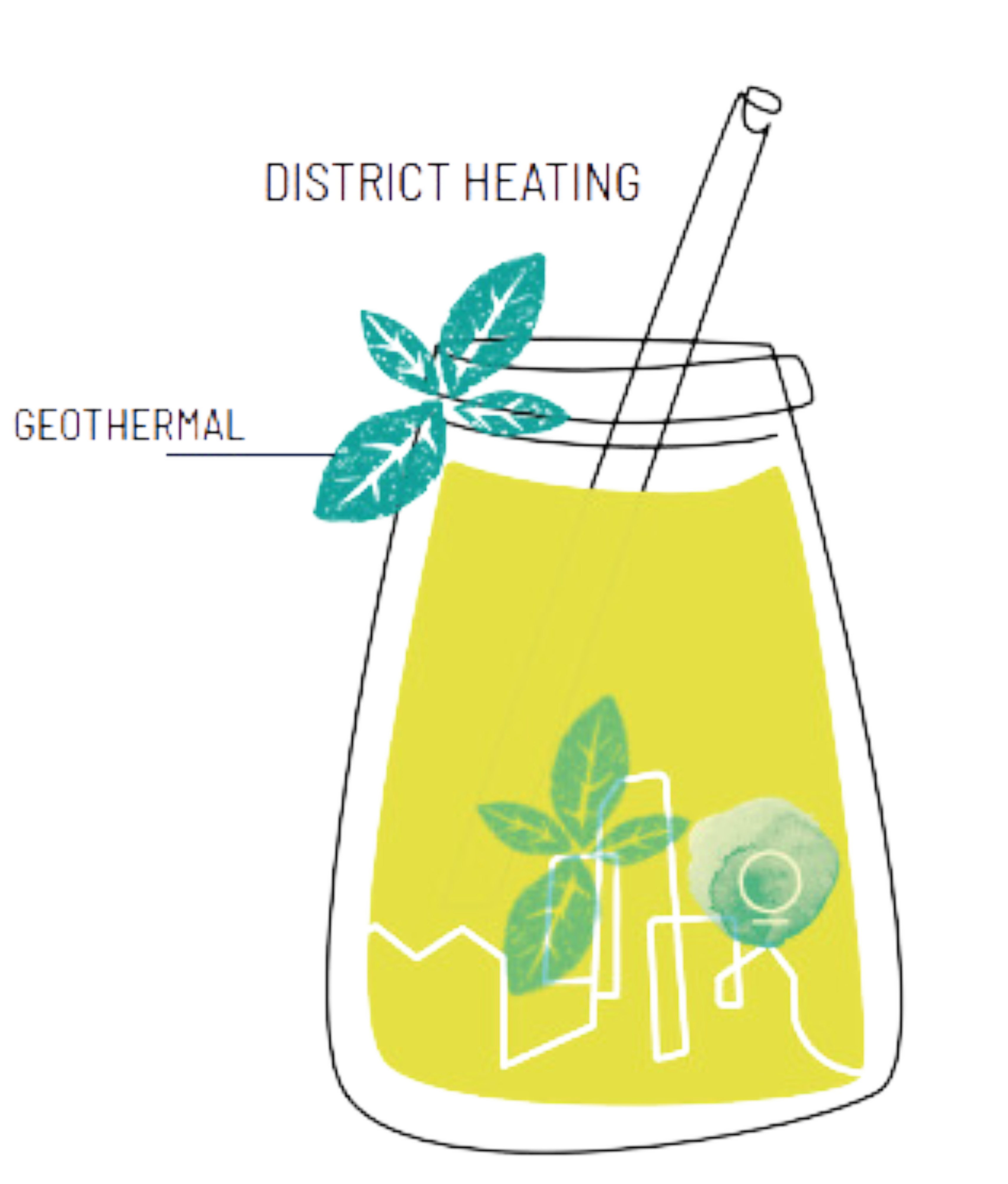Reykjavik, Iceland

The world’s northernmost capital is notorious for many things, and geothermal energy is a big part of that. From its impressively low levels of air and water pollution to the famous spas, hot springs and heated pools, all of this is linked to Reykjavik’s immense potential when it comes to geothermal. Now, the city is levelling up its game and cutting down emissions from geothermal heating.
Geothermal energy as the key ingredient
Geothermal energy is transforming urban life in Reykjavik city, not just by providing heat but by driving sustainable innovation. Reykjavik is a global leader, pioneering geothermal district heating for over 50 years through a visionary commitment to 100% renewable energy, even during rapid population growth. Reykjavik Energy is now pushing boundaries yet again with the goal of carbon-neutral energy production by 2030.
Reykjavik transitioned to geothermal heating in the 1970s after the 1973 oil crisis, when oil prices rose by 70%. At that time, 50% of houses used oil, while 43% used geothermal energy. A political decision shifted the focus to domestic energy resources, with the public voting for the parties willing to make that shift. Today, in Iceland, 90% of houses are heated with geothermal and 10% with electricity but in Reykjavik all houses are heated with geothermal. This transition improved quality of life and saved over 4% of GDP in 2020, with no heating cost spikes during the Ukraine war. Iceland's geothermal expertise is now a key export, supported by the GRO Geothermal Training Programme which offers fellows from low and middle income countries training in utilising geothermal resources, and by the Iceland Renewable Energy Cluster, which has been enhancing competitiveness in the sector since 2013. Reykjavik Energy has been a major force in this shift.
Each year, since transitioning from oil-heating to geothermal district heating, there has been substantial CO2 reduction related to house heating, accumulating to 135 million tonnes CO2 saved for the period from 1944 through 2022. The city has grown significantly in this period and annual savings due to geothermal heating now amount to 3.5-4.0 million tonnes a year, depending on how cold the winters are. The Silverstone project will allow Reykjavik city to become a capital city run on net-zero energy.
The Silverstone project
The EU-funded Silverstone Project will transform the Hellisheidi ON Power Plant into one of the world’s first near-zero carbon geothermal facilities. Through CO₂ capture, injection, and mineral storage, the plant will cut emissions by 95%, capturing up to 34,000 tonnes of CO₂ annually at the Hellisheidi power plant. This breakthrough will lower Reykjavik’s energy-related emissions substantially, allowing all homes and businesses to run on clean energy, setting a benchmark for sustainable urban energy systems worldwide. The Silverstone project is part of Reykjavik City's Climate Plan and an action within the EU mission of 112 climate neutral and smart cities by 2030.
All houses in Reykjavik are heated with geothermal resources provided by Reykjavik Energy (RE). Reduction in their emissions therefore affects all citizens and businesses in Reykjavík directly. RE operates two geothermal power stations where geothermal steam is utilized for power and heat production. The steam consists partially of two greenhouse gases, carbon dioxide CO2 and methane CH4. Typically they are released from the geothermal steam and emitted into the atmosphere. Carbfix has created a scientifically validated technology that transforms CO₂ and hydrogen sulfide (H₂S) into solid stone, providing a permanent solution for reducing GHG emissions. These two geothermal power plants account for 65-75% of RE’s total GHG emissions. At Hellisheidi, the carbon capture capacity will be scaled from 25% today to 95% of CO2 and 99% of H2S by 2025. At Nesjavellir, pilot injections started in 2023 and full-scale injection is planned by 2030. This will reduce emissions by 51,000 tCO2eq in 2030 compared to the baseline year 2016.
Geothermal energy: heating homes and fostering links
A co-benefit of Reykjavik’s district heating system is the abundance of low-cost geothermally heated swimming pools in the city. Hot springs and spas are popular with tourists, but the swimming pools are especially important to Icelander citizens. They act as informal forums for political discussion and decision making. And they are considered to be the best place to overhear the morning gossip and offer a place to make new friends and integrate into the local society. Everybody is equal at a swimming pool and people with different backgrounds meet there.
Reykjavik's Heat Detox

Key heat figures:
- Emissions related to heating: 17,438 tonnes of CO2
- Km of DHC currently: 3499 km
- Percentage of renewables in heating system: 100%
Covenant figures:
- Signatory to the Covenant of Mayors since: 2011
- Emission reduction ambitions:
- Overall CO2 emission reduction target: 462,392 tonnes CO2 equivalents
- % GHG emissions reductions by 2030: 80% compared to baseline year 2019
- % GHG emissions reductions by 2050: 100%
- Mission City
Financing your heat strategy
Budget: 8 million EUR
Sources of funding (rough breakdown): EU Innovation Fund and Reykjavik Energy
Contact
Kamma Thordarson - Project Manager, Economic and Urban Development
